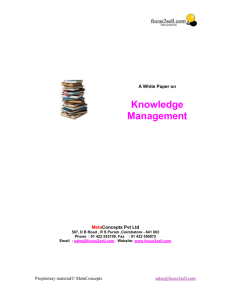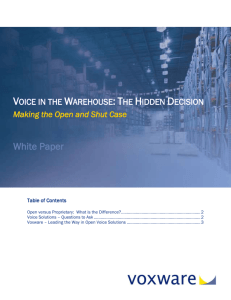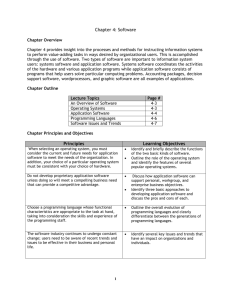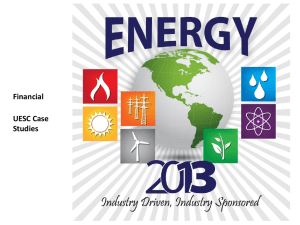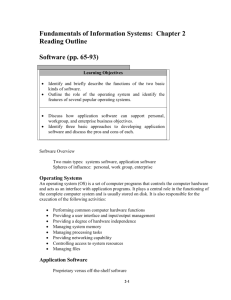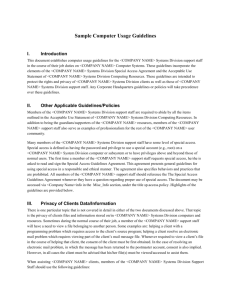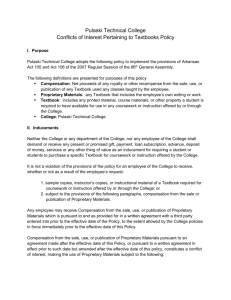Waste To Energy
advertisement
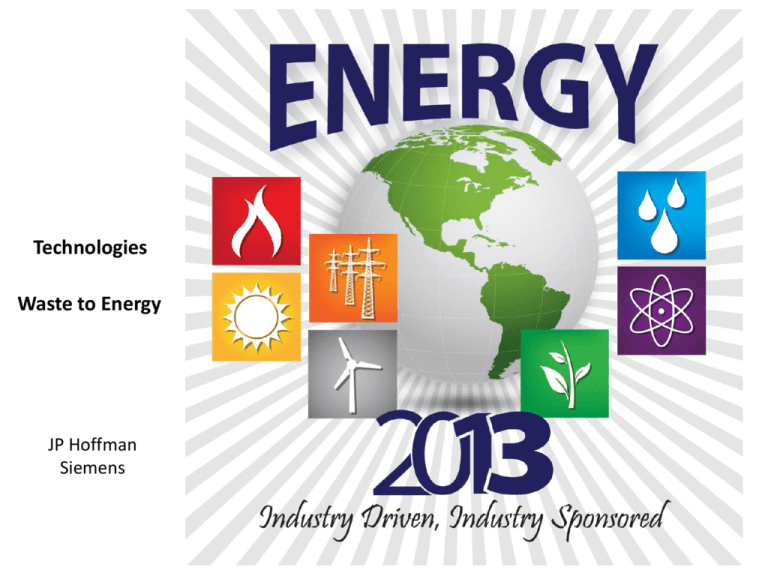
Technologies Waste to Energy JP Hoffman Siemens Agenda – – – – – – – Why WtE? Before Putting Into Service Challenges Opportunities Risks Rewards Lessons Learned Waste Material Utilization: Reuse, Recycle, Energy Recovery http://www.seas.columbia.edu/earth/RRC/waste_material_utilization.h tml Proprietary Information Of Energy 2013 Why Waste-to-Energy? Benefits • Reduce U.S. dependence on fossil fuels • Increase energy security • Reduce GHG emissions • Meet future policy emissions controls Proprietary Information Of Energy 2013 Environmental Aspects1 Reduction of GHG • Avoided methane emissions from landfills • Avoided CO2 emissions from fossil fuel combustion • Avoided CO2 emissions from metals production Water • Use • Discharges 1 – http://www.epa.gov/cleanenergy/energy-and-you/affect/municipal-sw.html Proprietary Information Of Energy 2013 Environmental Aspects Solid Waste Generation • MSW Waste-to-Energy generation creates a solid waste called ASH • Depending on state and local restrictions, non-hazardous ash may be disposed of in a MSW landfill or recycled for use in roads, parking lots, or daily covering for sanitary landfills Proprietary Information Of Energy 2013 Before Putting into Service Preliminary Requirements1 Applicable Concept and Design • Feedstock management • Design/Build/Operate/Maintain Agreement Environmental Considerations • • • • Air Emissions Permit Water Use/Discharge Permit Environmental Impact Requirement Regulatory Conformance 1 – http://www.seas.columbia.edu/earth/wtert/faq.html Proprietary Information Of Energy 2013 Before Putting into Service Preliminary Requirements1 Siting • Permits • Waste Availability/Supply Commitments • Ash Disposal (landfill) Capacity Financing Options • Contract Vehicles / PPA / EUL • Incentives & Guarantees • Exploration Expense • Tax Credits 1 – http://www.seas.columbia.edu/earth/wtert/faq.html Proprietary Information Of Energy 2013 Facing Challenges Public Opposition • Environmental groups often form opposition against new WtE plants regardless of technology used • Need to understand the impact this may have on permitting process, utility process and financing options • Understand timeline for public notification Technical and Performance Issues • System must meet performance criteria to remain economically viable • Newer, more experimental systems are risky because they have no demonstrated performance records Proprietary Information Of Energy 2013 Facing Challenges Cost Challenges • Exploration • New Infrastructure • New Generation Plant Waste Stream Supply Issues • Lack of supply could void any third party guarantee Funding and Financial Issues • Changes in government contract vehicles and/or restrictions • Lack of seed money for start-up projects Proprietary Information Of Energy 2013 Facing Challenges Scale Issues • Long term growth must be considered when determining applicable size of plant • Smaller scale projects have higher levelized costs of production Lack of Support for Decision Making • Lack of defined, documented economic, environmental, and technology performance metrics to inform the decision-making process and states’ varying definitions of municipal solid waste, biomass, and WTE Proprietary Information Of Energy 2013 New Opportunities ACHIEVE ENERGY MANDATES Energy security and availability • Promotes long-term affordable energy prices Reduces waste stream direct and indirect costs • • • • Tipping fees of disposal New landfill cell opening fees Transportation costs Labor costs Provides base-load power • Augment on-site intermittent renewable energy generation technologies • Solar and Wind • Unconsumed/overproduced electricity could be sold to the utility Valuable by-products for use in other areas • • • • Bottom ash Biogas Bio-char Bio-oil Proprietary Information Of Energy 2013 Understanding Risks Under-trained staff performing incorrect operation and maintenance procedures • Improper O&M can cause low production or failure of systems Energy price escalation • Evolving energy landscape leads to difficulty forecasting energy prices • Utility energy pricing fluctuation based on market conditions Waste Stream Supply • Intended use of buildings may change over time • Conservation methods may change volume or type of waste stream produced Proprietary Information Of Energy 2013 Understanding Risks Changing Emissions Standards/Environmental Legislation • Increasingly stringent emission standards may create future costs to comply if goals are not aggressive enough in design Plant Equity • Useful life is considered to be 20+ years – Current market estimate at 20+ years Proprietary Information Of Energy 2013 Understanding Risks Contract Clarification • Risk Responsibility Matrix • Understanding of scope of supply, limits of liability, liquidated damages, defects liability, periods, intellectual property, interface agreements and financial projections/guarantees prior to signing contracts Funding • High capital costs for Waste-to-Energy plant • Construction costs based on specific time period, if completion is delayed, damages may accumulate Proprietary Information Of Energy 2013 Earning Rewards Increased energy security and energy savings • May allow installation to increase and change mission objectives, diverting energy spend for other uses Prestige associated with achievement of energy goals • Plants are eligible for REC credits that may be sold to other energy users to offset carbon footprint and provide additional funding for the installation As technologies are used and refined, the next generation becomes less expensive and more efficient Proprietary Information Of Energy 2013 Lessons Learned Market • Look for projects with financial incentives, skilled workforces, adequate transmission and abundant input source Project Team • Create a team with decision makers, compliance officers, financial experts and appropriate engineering staff • Find common goals and determine generation misconceptions early to prevent unnecessary roadblocks during negotiations Proprietary Information Of Energy 2013 Lessons Learned Project Schedule • Projects that are shovel ready can better adapt to changing conditions • Understand the environmental regulations required prior to committing to a schedule, certain studies can only be performed during specific intervals within the year Site Considerations • Clearly defining the level of priority for project development and creating master site and energy plans can help resolve any land-use conflicts existing at potential sites Proprietary Information Of Energy 2013 Lessons Learned Utility Regulations as Barriers • Interconnection, net-metering O&M is Key for Success • Improper maintenance reduces system efficiency and threatens the useful life of equipment. Training • Required interval training and proper documentation Feedstock management Proprietary Information Of Energy 2013 Questions? Proprietary Information Of Energy 2013
